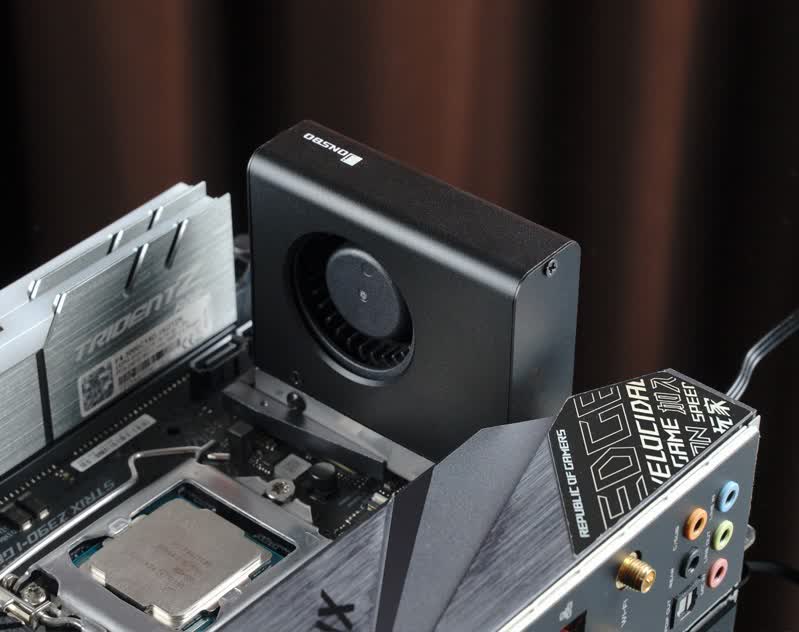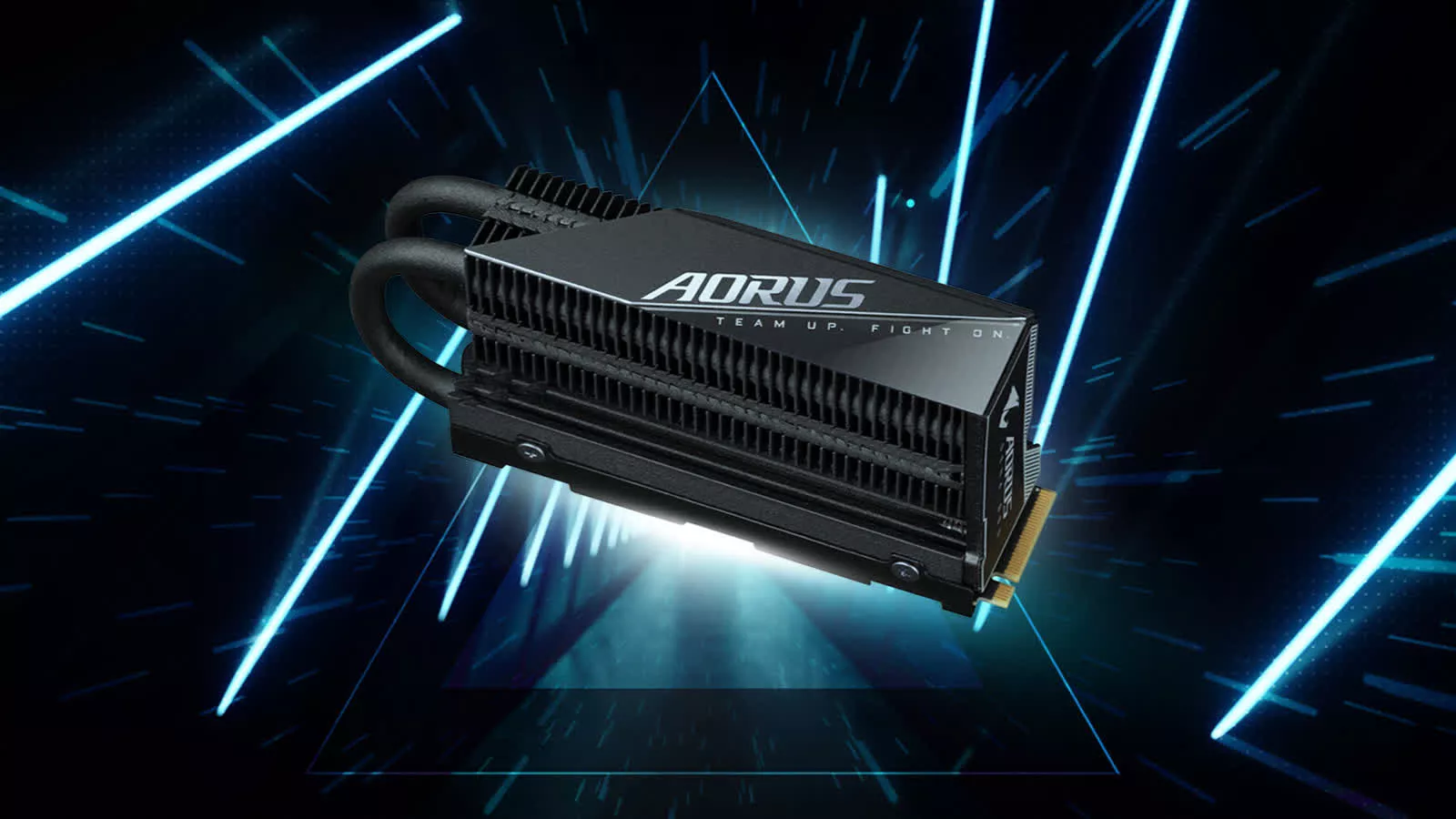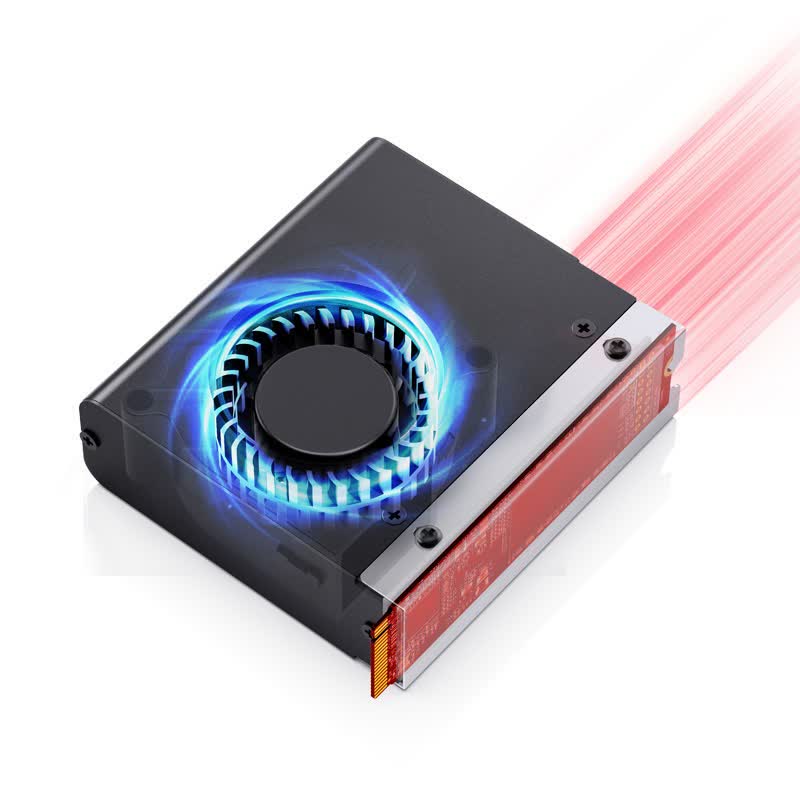In context: With the arrival of PCIe Gen 4, NVMe M.2 SSDs are now hotter and faster, two elements set to increase even more in the next-gen PCIe 5.0 SSDs. As such, companies are producing more robust active cooling systems, including one from Qiao Sibo that features a blower fan design.

ITHome reports that the M.2 cooler, which attaches directly to a drive, comes with an integrated aluminum heatsink and fan, offering speeds of 3,000RPM and a maximum air volume of 4.81CFM. It’ll certainly be noticeable through your case’s tempered glass window as it measures 76 mm x 24.5mm x 70.5mm, weighs 120g, and has a maximum noise output of 27.3dBA. You might even struggle to fit it alongside your board’s other components.
We’ve already seen M2 drives with similar beefy integrated cooling solutions—Gigabyte’s Aorus Gen4 7000s Prem. SSD (below) features a nanocarbon coated heatsink called Thermal Guard Xtreme that it claims allows the drive to maintain consistent 7GB/s seq. read speeds for over 8 hours. Teamgroup, meanwhile, unveiled the T-Force Cardea Liquid II, an all-in-one liquid cooler designed to be used with the latest PCIe Gen4 M.2 SSDs.

While these sorts of SSD coolers can help PCIe Gen4 SSDs maintain speeds of around 7GB/s without throttling, they may become necessary for PCIe 5.0 SSDs due to their higher power requirements (around 14W) and speeds. We recently heard about the ‘Project Nighthawk’ and ‘Project Blackbird’ prototype PCIe 5.0 M.2 SSDs from Adata that can reach sequential speeds of up to 14GB/s reads and 12GB/s writes in the case of the former.
No word on the performance offered by Qiao Sibo’s cooler or the price.
We can expect to see several PCIe 5.0 SSDs at CES next week, though most of them will likely be shown off virtually, given how many companies won’t have an in-person presence.
https://www.techspot.com/news/92782-active-m2-cooler-help-keep-pcie-gen-4.html
